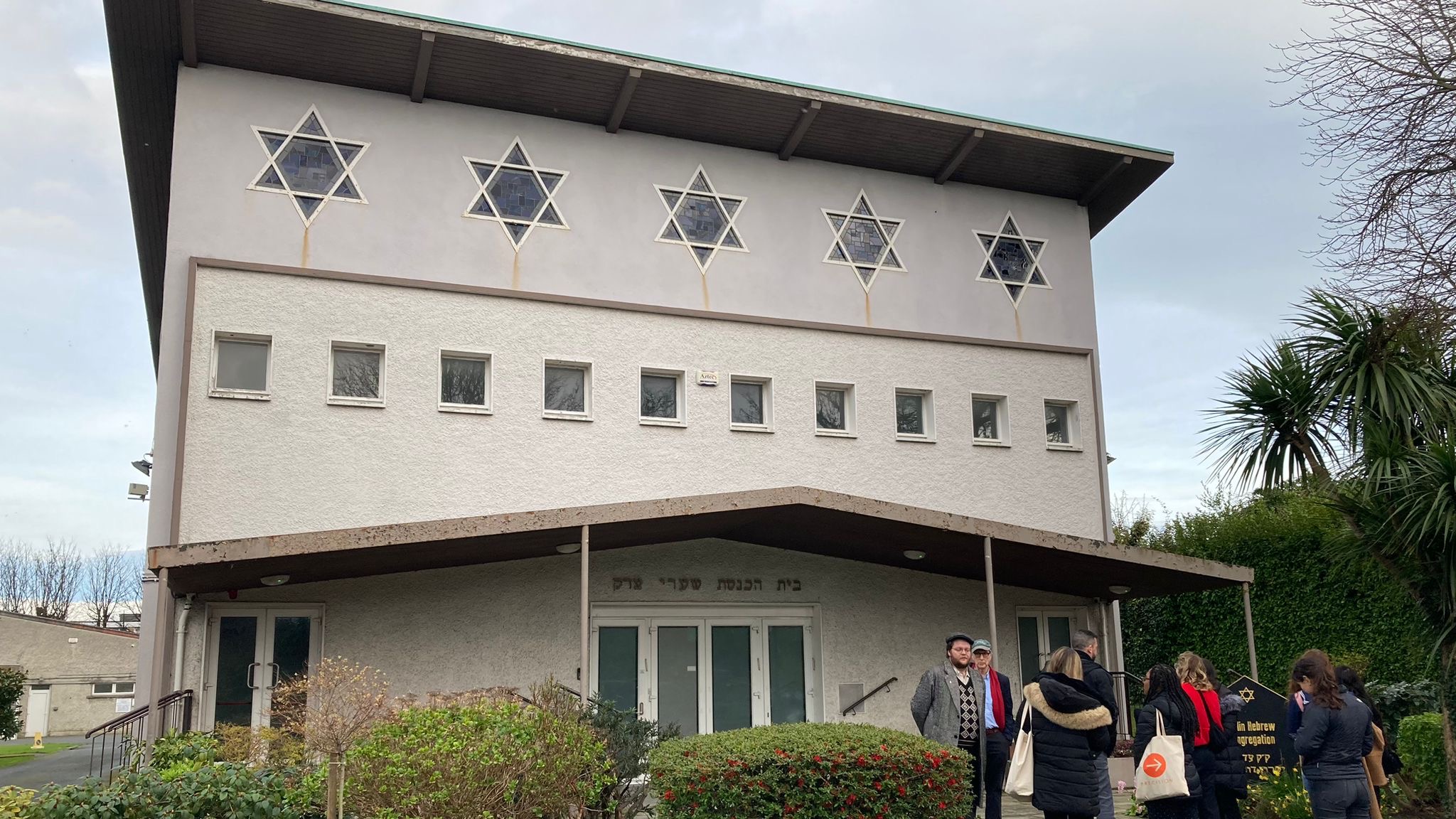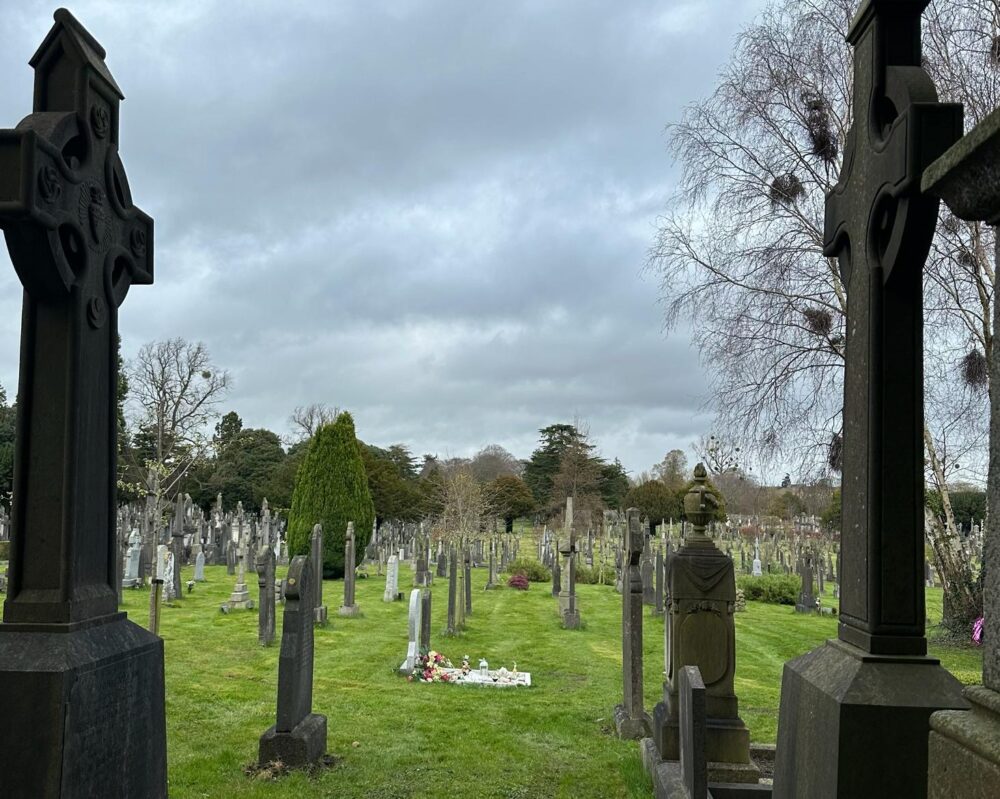
DUBLIN — We started our third day in Ireland at 8:30 a.m. by walking along the south bank of the River Liffey to Christ Church Cathedral. The Protestant cathedral was founded almost 1,000 years ago under the reign of Viking King Sitriuc, according to the church’s website.
Housed within the cathedral are several storied artifacts, such as the metal-encased heart of Archbishop Laurence O’Toole, patron saint of Dublin. The stone crypt — one of the largest in Ireland — contains a copy of the Magna Carta and a mummified cat and rat which were found trapped inside the organ pipes and are now affectionately called “Tom and Jerry” by the Irish, our tour guide Ian Bermingham told us.
After the tour we met with Very Rev. D.P.M. Dunne, dean of Christ Church Cathedral, who shared an overview of his own religious history. The dean said he grew up Roman Catholic in County Cork, which he described as being deeply religious.
“The whole town literally came to church,” he said.
Seminary school opened his eyes to philosophy and religious inquiry, setting him on a path to convert to Anglicanism and eventually become a leader in the Church of Ireland.
Dunne spoke about aspects of Catholicism with which he takes issue, namely the faith’s stance on human sexuality and treatment of women. Catholicism is dogmatic, he said, comparing the religion to mushrooms, which are kept in the dark to grow. Whereas Anglicism is a “living faith,” which adapts based on the experiences of its practitioners.
“I’d prefer a thinking congregation,” he said.
He noted, however, that Catholicism in Ireland is undergoing a period of change. He said he’s noticed a shift under Pope Francis, and described faith in Ireland as experiencing a “questioning” or “in-between” phase.
While there are far fewer practicing Catholics in Ireland today than there were several decades ago, many people remain nominally Catholic, said Dunne, adding that the state is secular, but religion remains a strong undercurrent.
The dean said that through immigration, people have brought their religions to Ireland, which has been one of the greatest developments for the country.
“All of that has diluted the monochrome experience of faith in Ireland,” he said.
Also of note, we learned that Dublin’s sister diocese is the Diocese of Jerusalem. Some Protestants in Ireland still associate Palestinians with the Irish Republican Army, said Dunne, because of the IRA’s historical connection to the Palestine Liberation Organization.
On our way to the next stop, we passed the Abbey Theatre. Bermingham filled us in on the Gaelic revival movement, during which plays written about historical Irish figures were performed on the Abbey Stage. “[The Irish] were imagining their future by reimagining their past,” said Bermingham.
Since more than half of Ireland’s population identifies as Roman Catholic, according to 2022 census results, we rounded out the morning by walking through St. Mary’s Pro Cathedral. Several of us stopped to observe the “Candle of Innocence,” which burns in memory of survivors of clerical and institutional abuse.
Notes From The Field
The sun came out for a moment as we parted ways for another afternoon of reporting and exploring the city.
Ellie Davis visited a classroom at a nondenominational school to learn about their ethical-based education model and how it compares with Catholic schools’ religious-based education.
Ann W. Schmidt left Dublin and traveled to Northern Ireland’s first co-op farm in Larne. She witnessed volunteers feeding chickens, Shetland sheep and pigs.
Natalie Demaree took a peaceful stroll through Glasnevin, Ireland’s National Cemetery and home to the world’s largest collection of Celtic crosses.

Eleanor H. Reich met six men holding a sign that said “Grandfathers Against Racism.” They told her they stand there once a week in response to what they view as a rise in racism and xenophobia towards migrants in Ireland.
Other classmates bought souvenirs, toured Trinity College and grabbed lunch.
Kosher Dinner and Discourse at the Synagogue
In the evening, we went to the Dublin Hebrew Congregation, the only Orthodox congregation in the Republic of Ireland.
Edwin Alkin, president of Dublin’s Irish Jewish Museum, led a talk on Jewish Irish history. He told us about the rapid growth in the local Jewish population as persecuted Jews from Russia and Lithuania immigrated to Ireland.
The discussion shifted from the past to the complex present of the Jewish experience with the arrival of guests from both the Israeli expat community in Ireland and the local Jewish community.
We paused the conversation momentarily for a Kosher dinner. Before digging in, Prof. Goldman taught the group an English version of “Shalom Aleichem (Peace be Upon You),” a Jewish song traditionally sung in Hebrew.
During dinner, there was a spirited debate between the Irish Jews and Israeli expats about their views of antisemitism in Ireland. Most of the local Irish Jews insisted antisemitism was not felt in Ireland, while the Israelis accused them of turning a blind eye to the growing antisemitic rhetoric in the country.
Overall, the experience was tense but insightful. In class, Prof. Goldman told us that where there are two Jews, there are a million opinions, and this is exactly what we experienced.
When we left dinner, a pleasant surprise awaited us: a double decker bus all to ourselves. We rushed in with child-like enthusiasm and headed back to the Gresham Hotel.
Edited by Ann W. Schmidt and Natalie Demaree
